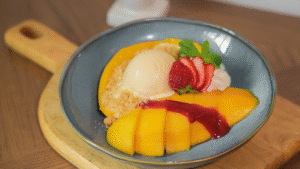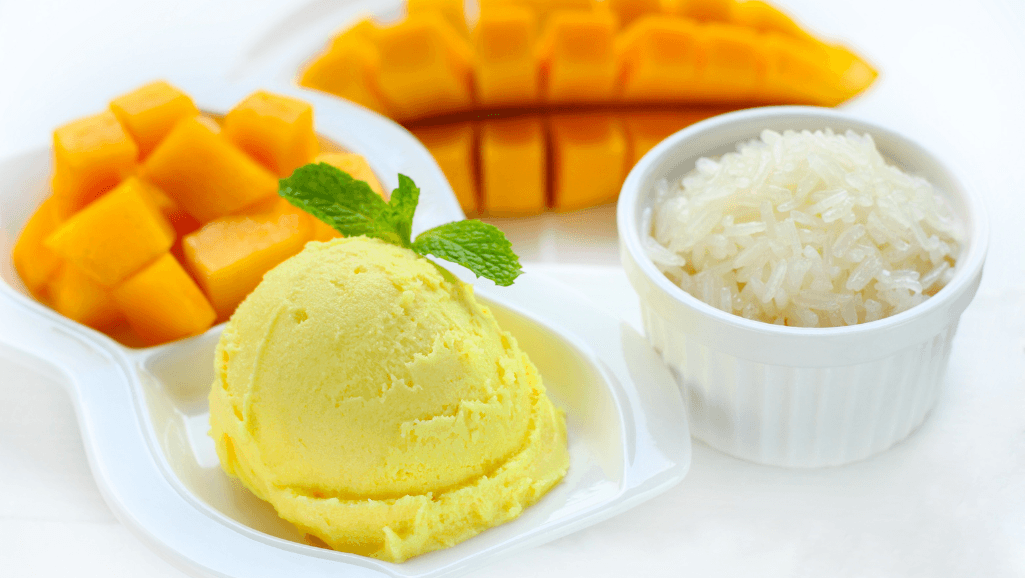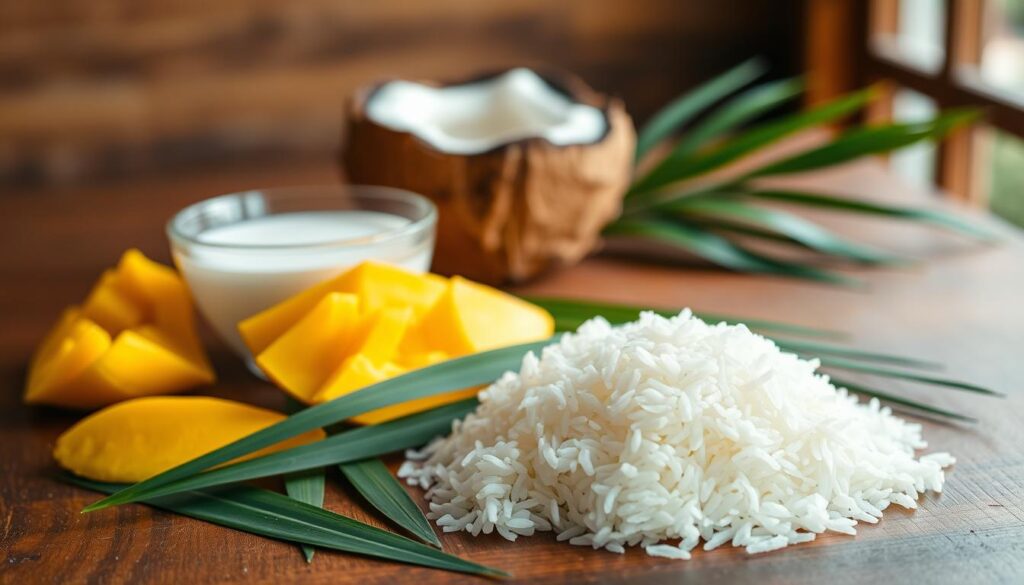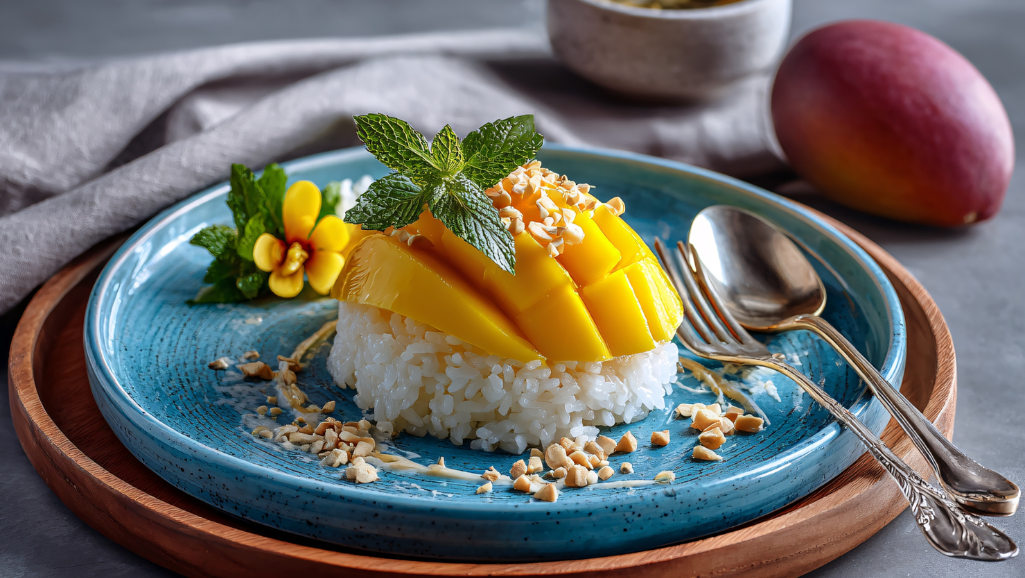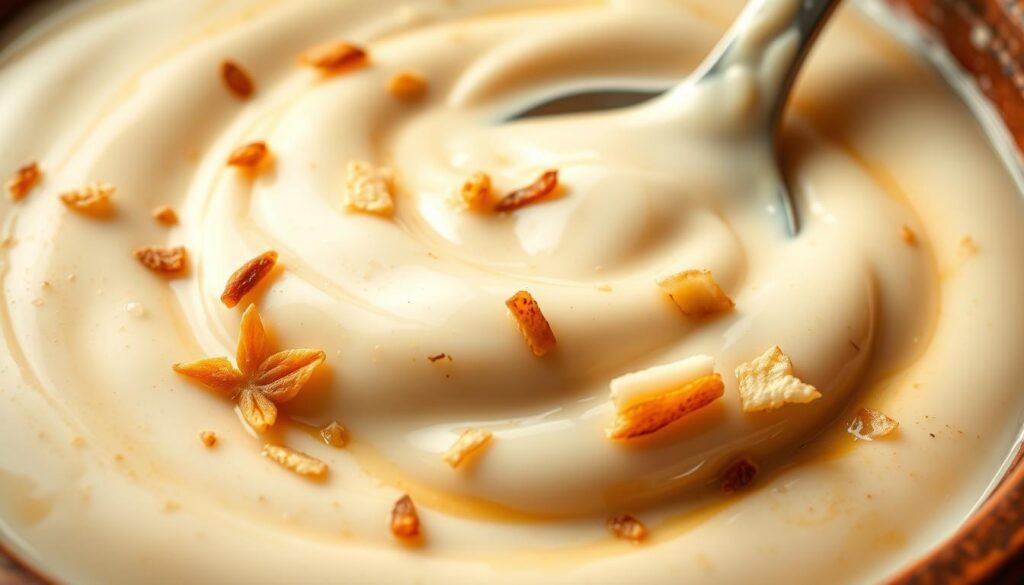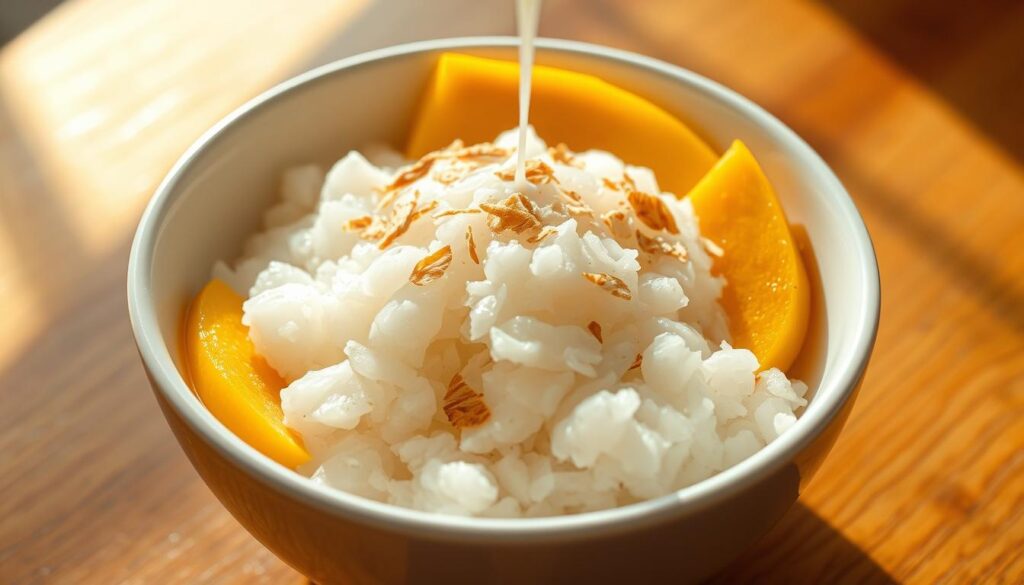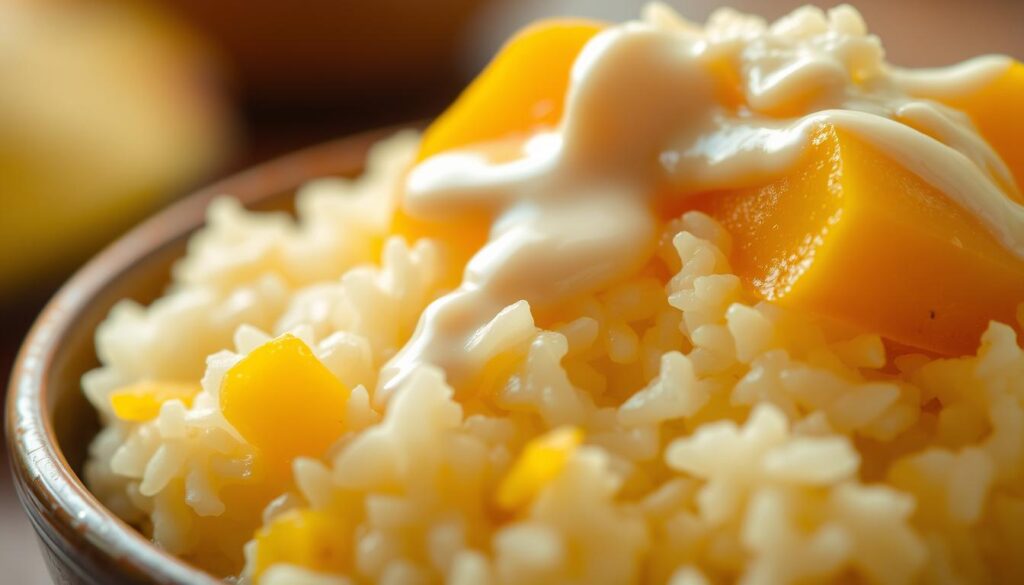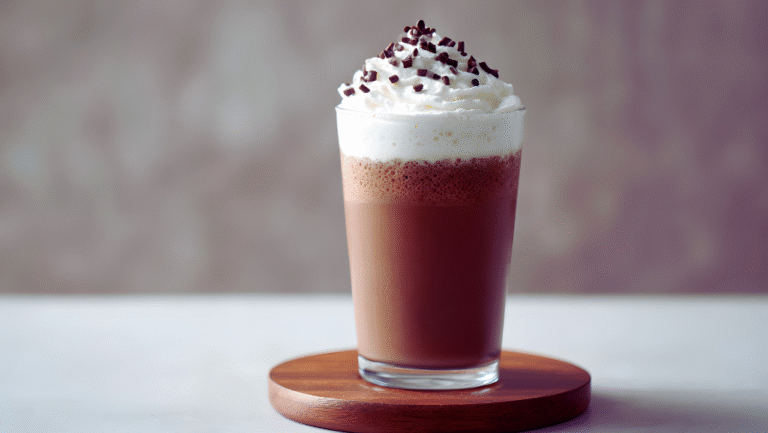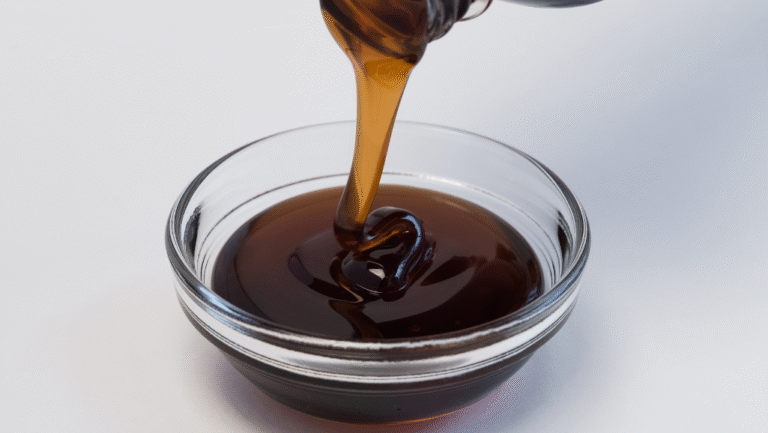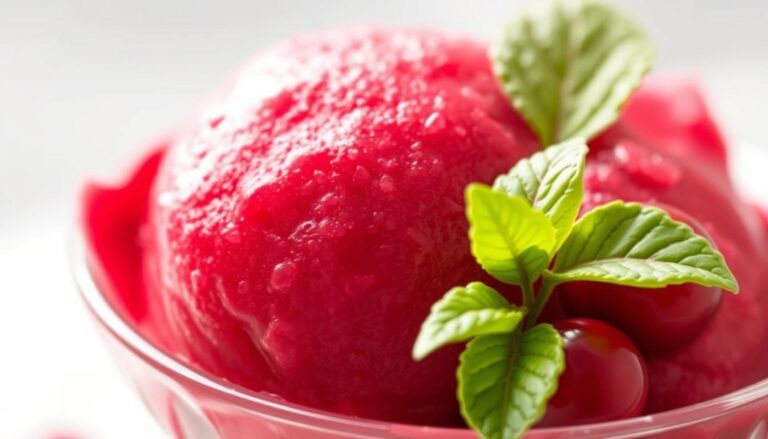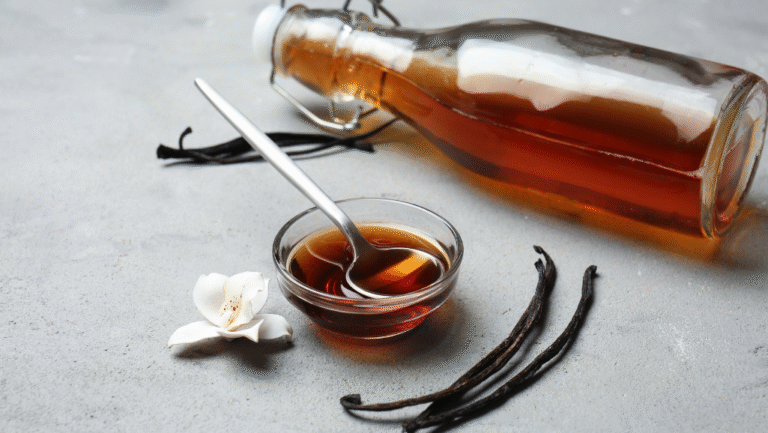Discover an irresistible dessert that balances creamy richness with a tender, chewy texture. This approachable recipe guides you from pantry staples to a glossy, restaurant-worthy sauce with easy, pro-backed tips.
Simple methods make big impact. You’ll learn what gives the grains their signature bite and which small steps lift the whole dish. Clear timing cues and visual markers help you know when the rice is perfectly tender and the sauce is silky.
Whether you’re cooking for a quiet night in or hosting friends, this post shows how to plate a vibrant, tropical finish. Tools you already own and a few smart shortcuts let you honor tradition while making the process stress-free.
Key Takeaways
- Follow straightforward steps for glossy grains and a silky sauce.
- Small timing and visual cues ensure ideal texture every time.
- Use common kitchen tools to create a restaurant-style dessert.
- Smart shortcuts keep tradition alive without extra fuss.
- Plating tips help showcase color, contrast, and shine.
Coconut Mango Sticky Rice Ice Cream
4
servings30
minutes40
minutes300
kcal1
hour10
minutesCreamy coconut and mango delight inspired by Thai dessert.
Keep the screen of your device on
Ingredients
1 cup 1 sweet sticky rice
1.5 cups 1.5 coconut milk
1 cup 1 heavy cream
0.75 cup 0.75 sugar
1 pinch 1 salt
2 ripe 2 mangoes
1 teaspoon 1 vanilla extract
Directions
- Rinse the sticky rice and soak it in water for at least 1 hour. Drain the rice after soaking.
- Cook the rice using a steamer for about 25 minutes until tender. Let it cool to room temperature.
- In a saucepan, combine coconut milk, heavy cream, sugar, and salt over medium heat, stirring until sugar dissolves.
- Remove the mixture from heat and let it cool before adding vanilla extract and blending until smooth.
- Peel and dice mangoes, then puree them until smooth. Fold the puree into the coconut mixture.
- Chill the mixture in the refrigerator for at least 2 hours before churning for best results.
- Pour the chilled mixture into an ice cream maker. Churn according to the manufacturer’s instructions, approximately 20-25 minutes.
- Transfer the churned ice cream to a lidded container and freeze for at least 4 hours before serving.
- Serve with additional fresh mango slices or toasted coconut flakes for added texture.
Nutrition Facts
- Total number of serves: 8
- Calories: 250kcal
- Cholesterol: 20mg
- Sodium: 30mg
- Potassium: 150mg
- Sugar: 20g
- Protein: 3g
- Calcium: 40mg
- Iron: 1mg
- Thiamin: 0mg
- Riboflavin: 0mg
- Niacin: 0mg
- Folate: 0mg
- Biotin: 0mg
- Phosphorus: 70mg
- Iodine: 0mg
- Magnesium: 20mg
- Zinc: 0mg
- Selenium: 0mg
- Copper: 0mg
- Manganese: 0mg
- Chromium: 0mg
- Molybdenum: 0mg
- Chloride: 0mg
Did you make this recipe?
Tag @https://www.instagram.com/ice_cream_haven/ on Instagram and hashtag it with #IceCreamIceCreamHavens
Like this recipe?
Follow @https://www.pinterest.com/Ice_Cream_Haven/ on Pinterest
Join our Facebook Group!
Follow https://www.facebook.com/icecreamhavens/ on Facebook
Why This Coconut Mango Sticky Rice Belongs on Your Dessert Menu
Add a bright, tropical finale to your menu that balances creamy and fresh flavors in every spoonful. This classic Thai pairing is beloved for its salty‑sweet harmony and silky mouthfeel.
It’s simple to make with basic tools, and you don’t need a bamboo steamer. Stovetop or microwave methods cut prep time while preserving authentic texture.
The gentle sauce of coconut milk and sugar wraps each grain, while ripe fruit adds juicy contrast. Toasted sesame seeds or a sprinkle on top bring aroma and subtle crunch.
“A few thoughtful steps turn pantry staples into a dessert that feels like a celebration.”
- Active work takes only a handful of minutes; most effort is passive.
- Flexible timing lets you prep ahead and assemble right before serving.
- Repeatable and crowd‑pleasing—perfect for weeknights, potlucks, or dinner parties.
- Naturally dairy‑free and gluten‑free, it fits many menus and diets.
Ingredients, Tools, and Time at a Glance
A short checklist of ingredients, gadgets, and timing will set you up for a flawless result.
Core ingredients
Glutinous rice (often labeled sticky or sweet), full‑fat coconut milk, granulated sugar, a pinch of salt, and ripe mangoes make the base. Use one cup measures when the recipe calls for cups and cup amounts for accuracy.
Optional toppings
Toasted sesame seeds, toasted shredded coconut, and a few fresh mint leaves add aroma and contrast. Toast in a dry pan for 1–2 minutes until fragrant.
Tools you’ll use
Gather a saucepan for the milk infusion, a steamer lined with cheesecloth for authentic texture, or a microwave‑safe bowl for the quick method. A small pot or sturdy bowl keeps things simple in a busy kitchen.
Prep, cook, and rest times
Plan about 5 minutes prep, 30–35 minutes cook, and roughly 1 hour rest so the grains absorb the sauce. For steaming, soak the glutinous rice at least 1 hour and steam ~20 minutes. For a fast path, soak 10–60 minutes and cook until translucent.
- Serves: 4
- Timing: short prep, modest cook, restful pause—those minutes matter.
How to Make Mango Sticky Rice: Step-by-Step Success
This step-by-step guide walks you through soaking, cooking, and finishing for perfect texture every time.
Soak and steam for authentic texture
Soak Thai sweet sticky rice at least 1 hour. Drain and steam in a cheesecloth-lined basket about 20 minutes until tender. Steam lets steam surround each kernel for even tenderness without waterlogging.
Quick microwave method
When you’re short on time, soak 10–60 minutes, then microwave in short bursts. Stir between rounds until the water has vanished and grains turn translucent.
Sweet coconut soak and rest
Warm full-fat coconut milk with sugar and a pinch of salt in a small saucepan over low heat until dissolved. Pour over hot rice so it can absorb the mixture, then cover and set aside for 20–60 minutes (up to 2 hours) so the grains plump and gloss.
- Spoon warm rice into mounds.
- Slice ripe mango just before serving for bright color and juice.
- Optional: drizzle a separate warm coconut cream sauce at the table.
Coconut Cream Sauce and Toppings That Elevate Every Bite
A second, thickened coconut preparation plus warm toasted seeds gives the dish a professional finish.
Create a silky, pourable sauce by gently simmering full‑fat coconut milk in a small saucepan. Whisk a cornstarch slurry into the warm milk until the mixture coats a spoon and gleams. Keep the heat low so the sauce thickens evenly and stays smooth.
How to balance sweetness and texture
- Whisk in a touch of sugar and a generous pinch of salt to lift flavors; keep sugar restrained so the dessert stays balanced.
- Measure a modest 1/2 cup of sauce for drizzling, and scale in 1/2 cups if you need more for a crowd.
- For crunch, toast unsweetened shredded coconut in a dry pan 4–5 minutes until golden, then finish with toasted sesame seeds.
- Drizzle coconut sauce at the table for a glossy reveal, then top with seeds to add aroma and bite.
The two‑prep method—one batch of coconut milk for soaking and one thickened sauce for the top—creates that sought‑after salty‑sweet contrast and a silky finish that makes each spoonful sing.
Coconut Mango Sticky Rice: Pro Tips for Perfect Texture
The secret to an unforgettable finish lies in choosing the right grain and treating it with patience.
Use Thai sweet sticky rice for that mochi-like chew
Commit to glutinous rice — other short-grain varieties won’t deliver the same chew. Soak at least 1 hour, then steam gently about 20 minutes until grains are plump and slightly translucent.
Balance salty-sweet flavors in both coconut preparations
Make two batches of sweet coconut: one sweeter mixture for soaking the rice and a thicker, less-sweet sauce for drizzling. Adjust sugar salt carefully; a noticeable pinch of salt lifts the tropical sweetness.
Choose very ripe, fragrant mangoes (consider Ataúlfo when in season)
Pick fruit that smells fragrant and yields slightly to touch. Ataúlfo mangoes (March–July) are ideal for perfume and low fiber, giving a clean, luxurious bite.
- Soak and steam for even texture, then rest so grains absorb the soak and shine.
- Taste as you go and fine-tune sugar and salt for both soak and sauce.
- Keep the sauce warm, not boiling, so it stays silk-smooth at serving time.
Follow timing and visual cues — glossy, spoon-coating sauce and plump grains — and your dessert will hit the right notes. For a tested method, see the full recipe.
Smart Swaps, Substitutions, and Dietary Notes
Smart swaps keep this tropical dessert flexible without losing its signature charm.
When you can and can’t swap the grain: Authentic glutinous rice is best for the mochi-like chew. If you can’t find it, short-grain sushi rice makes a pleasant everyday version. Expect a different mouthfeel—still tasty, but not true sticky rice mango texture.
Dietary essentials
This recipe is naturally dairy-free and gluten-free. Using full‑fat coconut milk and sugar keeps the dessert inclusive for many guests.
Storage and reheating
Store components separately in the fridge for up to 1–2 hours days. Reheat the rice in a small pot with a splash of water, stirring until steamy. Warm the sauce on low so it stays glossy on top.
- Swap wisely: pick neutral grains that won’t overpower the fruit.
- Adjust sweetness: add a little more sugar if your mango is tart.
- Finish with flair: arrange slices on top and add a light garnish so even a practical swap looks celebratory.
Serving Ideas, Make-Ahead, and Storage
Bring plates to the table with warm, spoonable mounds and a careful drizzle that catches the light. Serve mounds of coconut rice beside generous slices of mango, then add a gentle drizzle coconut cream to wake up shine and aroma.
Serve warm with a drizzle and a sprinkle
Plate warm, glossy rice in a rounded cup on shallow bowls or plates. Add sliced fruit on the side and finish with toasted sesame seeds for a whisper of crunch.
Make-ahead and reheating
Prepare rice and sauce separately and set aside in airtight containers. Refrigerate components for 1–2 days; do not freeze—textures suffer.
Reheat rice with a teaspoon or two of water in the microwave for 20–30 minutes or gently warm in a saucepan over low heat until the grains absorb moisture and soften.
Return the sauce to pourable consistency with low, steady heat or brief microwave bursts. Use a small pan or pot for precise control when assembling multiple plates.
Portioning and finishing touches
- A rounded cup of rice gives a pleasing portion and a canvas to showcase ripe mangoes.
- Let the rice absorb its soak fully before service—those extra minutes improve texture and depth.
- Sprinkle a light dusting of sugar only if fruit leans tart, and always finish with a few sesame seeds for aroma.
Conclusion
Finish with confidence. A warm, glossy serving rewards patient soaking and a careful sweet‑salt balance. Use the quicker microwave or classic steamer to fit your time and tools.
Keep two coconut milk preparations on hand: one to soak the grain and a thicker, lightly salted sauce for pouring. Taste and tweak sugar and salt in small steps so the finish feels balanced.
Scale in simple 1/2 cup steps for gatherings, reheat gently in a small pot, and top with a light scatter of sesame seeds. Try an Ataúlfo fruit when in season for the best perfume.
Return to this mango sticky rice recipe whenever you want a bright, comforting dessert that rewards small, deliberate choices.

